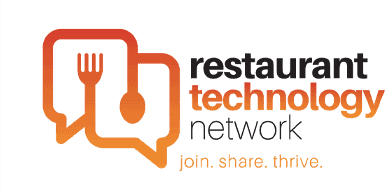You’ve seen it if you spend any time on Instagram.
Social media influencers all over the world have posted millions of photos with an instantly identifiable aesthetic that quickly came to be synonymous with the platform. “Instagram perfect” shots of photoshopped bodies in front of the perfect pink wall flooded into our computers and mobile devices, making us jealous of the carefree, beautiful existences that these influencers must experience every day.
But Instagram perfect didn’t just apply to people in rainbow-hued settings with just the right lighting. It also invaded our restaurants and bakeries and delis—anyplace you might find a photogenic ham sandwich. Food couldn’t just be ordered and enjoyed anymore, it had to be photographed—in just the right light—and posted for all to see before taking that first bite.
It didn’t take long for restaurants to see the advantages that all these photos could create for them. A well-placed Insta-shot of your food taken by the right influencer could mean a windfall of free publicity, leading to a deluge of other phone and camera-wielding patrons pouring through your doors.
The concept of eating first with your eyes and the importance of presentation in food preparation took on a whole new level of significance as restaurant owners upped the degree of artistry in their culinary creations, re-thought the design of their menus, and even redesigned the interior of their establishments.
Extra effort went into increasing the amount of natural light in the dining space and making sure table settings, cutlery, and centerpieces were particularly photogenic.
Some even went so far as to install a $10,000 Instagram table complete with moveable arm lights, adjustable light intensities, and adjustable color temperature settings to ensure the perfect shot of that steak and onion rings (with glimmering beer in the background).
Something has happened within the past few months, though, when it comes to Instagram and influencers. As more and more users filled their feed with the Instagram aesthetic, the “likes” and “follows” began to go down instead of ever-upward.
As is often the case, with ubiquity comes boredom. What users are looking for now is something novel. They want something unique. They want reality.
Ideal lighting and picture perfect colorful backgrounds are no longer the “it” look. If you’re an influencer worth your salt, you’re posting informal snaps in the mirror. Instead of whimsically colorful shots at manufactured Instagrammable hot spots, you’re shooting in front of the post office or at the corner table of the local convenience store.
Time spent trying to achieve lighting perfection has given way to the use of apps like Huji Cam whose goal is actually to make your photos look worse, grainier, grittier… more “real.”
So how does this tectonic shift from perfection to gritty reality translate to the world of culinary Instagramming? Is that towering triple-decker burger with mouthwatering cheddar melting enticingly down the sides giving way to a grainy shot of a vending machine tuna salad sandwich in plastic? Will people decide that taking a professional portrait of their food is not nearly as enjoyable as just eating it?
That’s a more difficult question.
A quick trip through Google will bring up countless articles and blogs about the food selfie phenomenon.
But most posts about the frequency of such pics popping up in your social feed or tutorials on how to best capture your brunch for posterity are dated several years in the past. More recent treatises on the trend are harder to come by.
In fact, you’re just as likely to find backlash articles begging us all to stop the insanity and keep our meals to ourselves, for the love of God! Science has even weighed in on the topic, outlining both the dangers and benefits of the practice.
So, the question remains: Is making your food “Instagram Perfect” still a thing you need to worry about? Or will it go the way of the perfect selfies of social influencers? The truth is that, when it comes to those selfies, few of us can relate to looking perfect in an idyllic location. Food, on the other hand, is something we all can relate to. Most of us have sat in a restaurant or deli or bakery and delighted at the plate we found in front of us.
Whether the impetus is to show off your perfect meal or to tip off your friends and followers to a newly discovered foodie hotspot, we seem hardwired as a race toward wanting to show people our food. Technology has simply made it easier to do so.
As for the trend toward realism as opposed to perfection, think about it this way: if you’re going to look at food, you want it to be enticing. And if food from your establishment is going to be shared with the world, you don’t want it to look “gritty” or mundane.
Whether the $10,000 Instagram table becomes the norm or not remains to be seen, but the fact remains: as long as people are going to be photographing and sharing their food with the world, you’re going to want the food they snap at your place to look as “Instagram Perfect” as possible.





